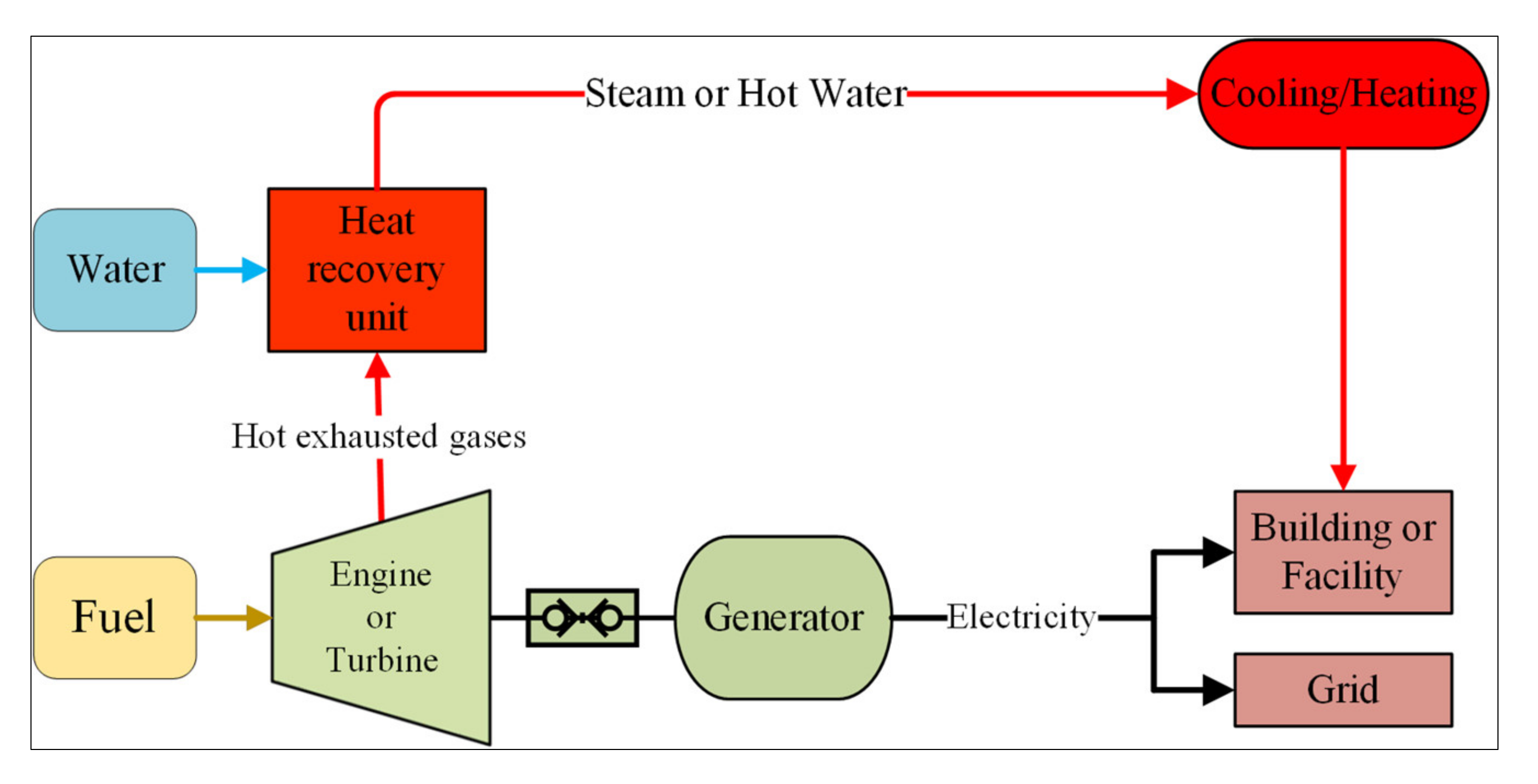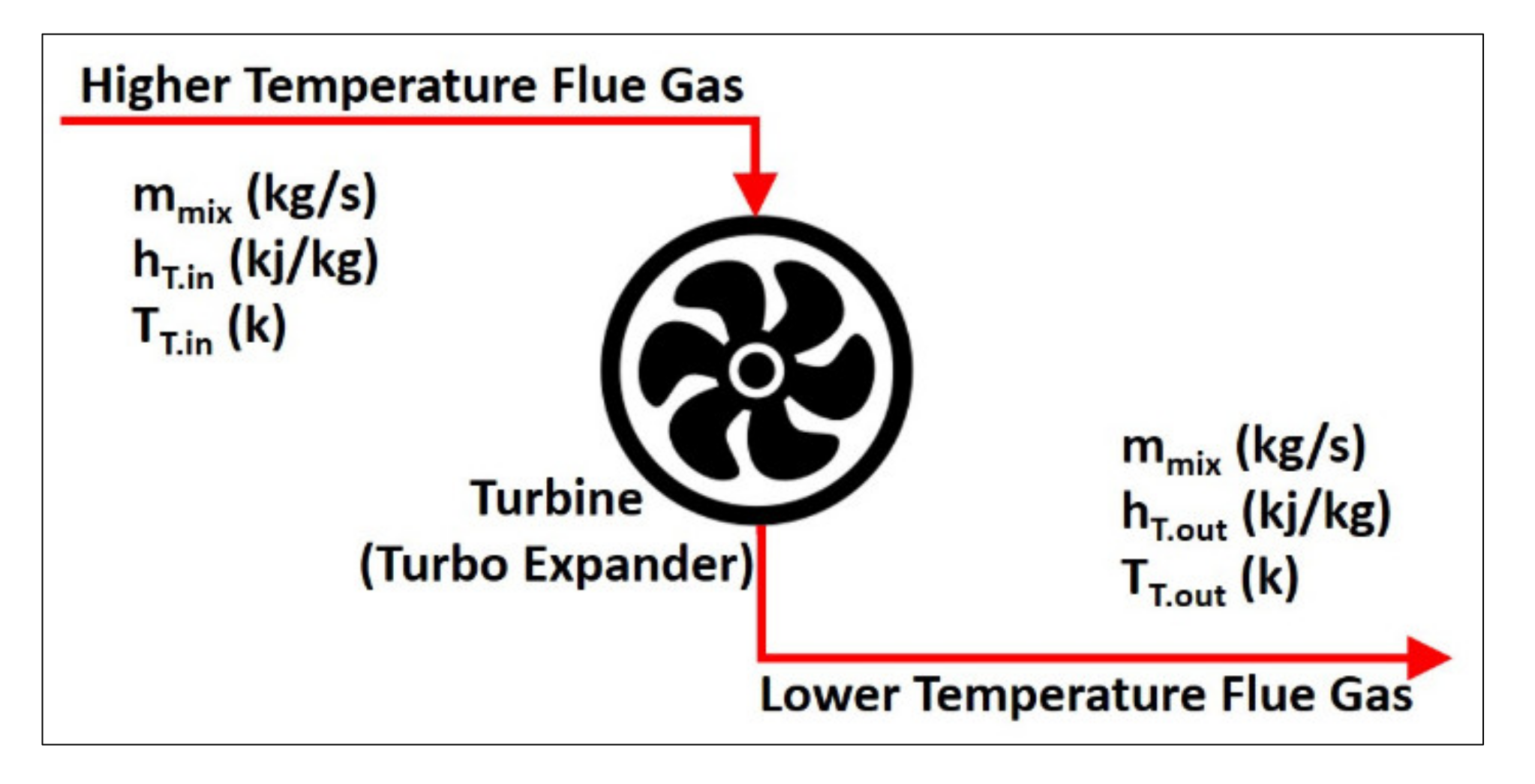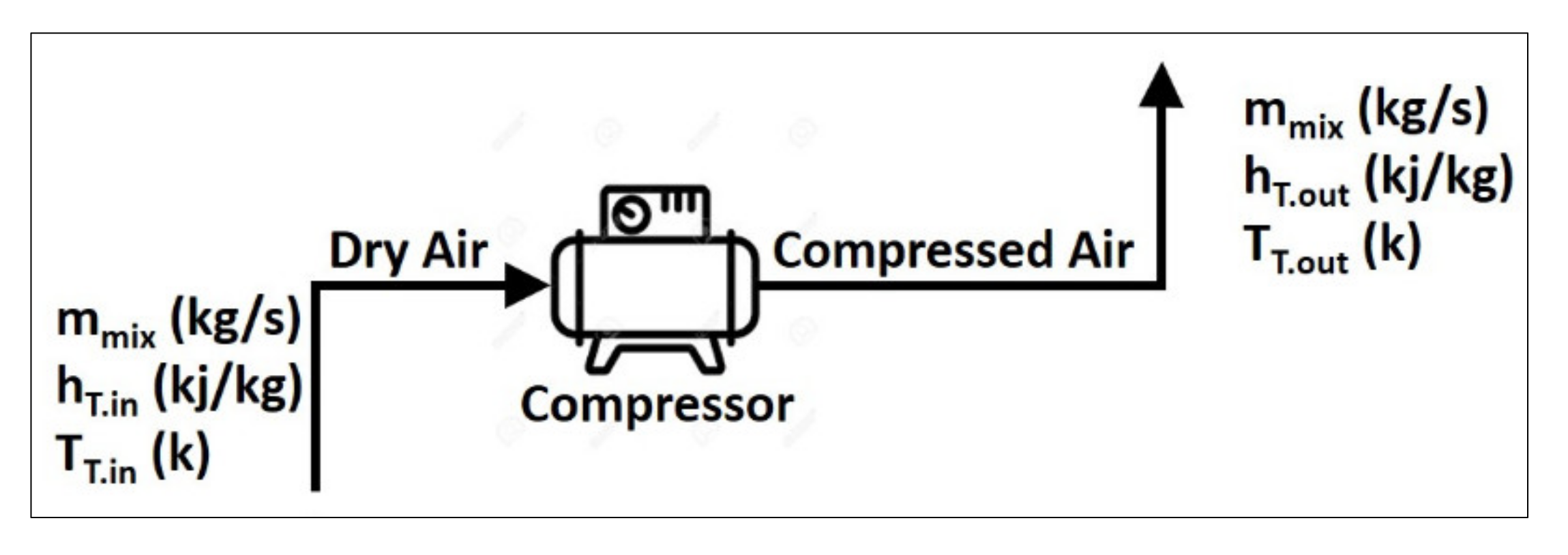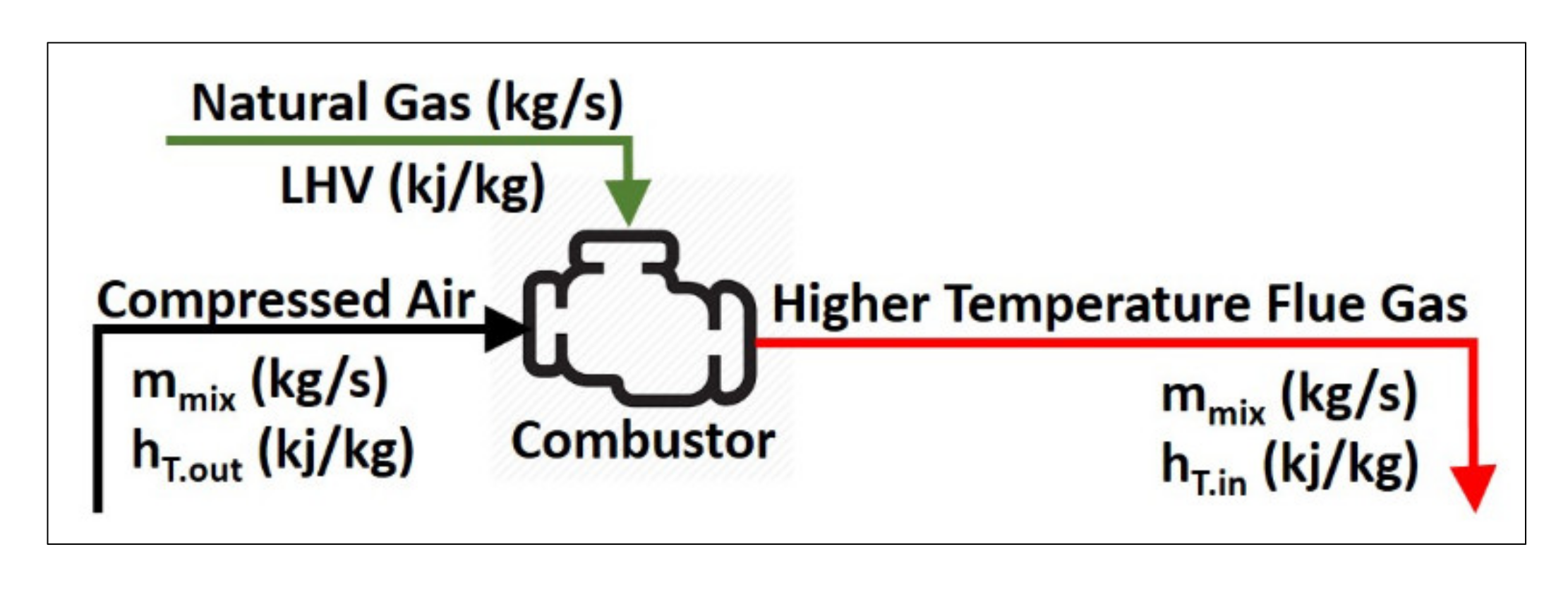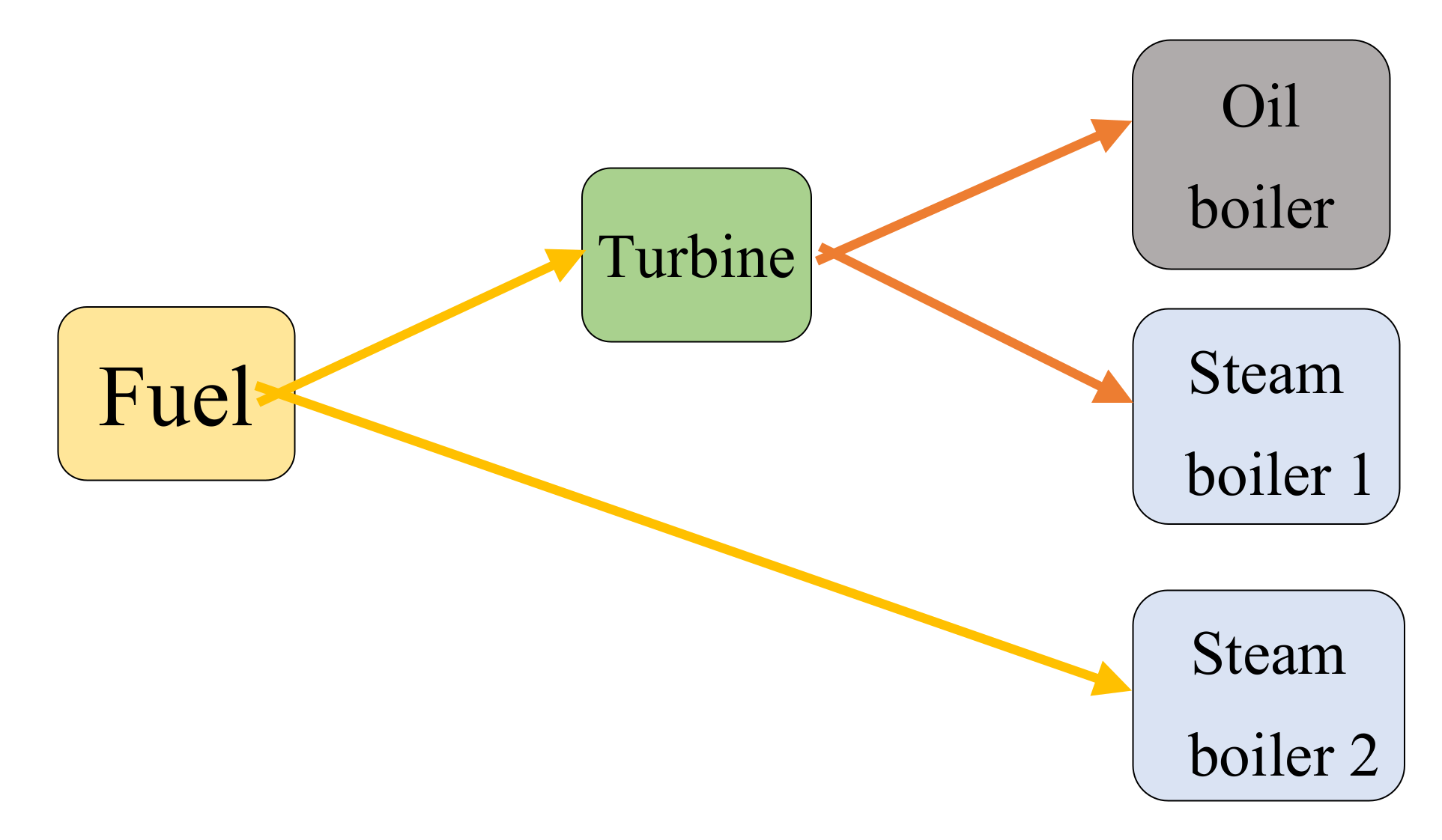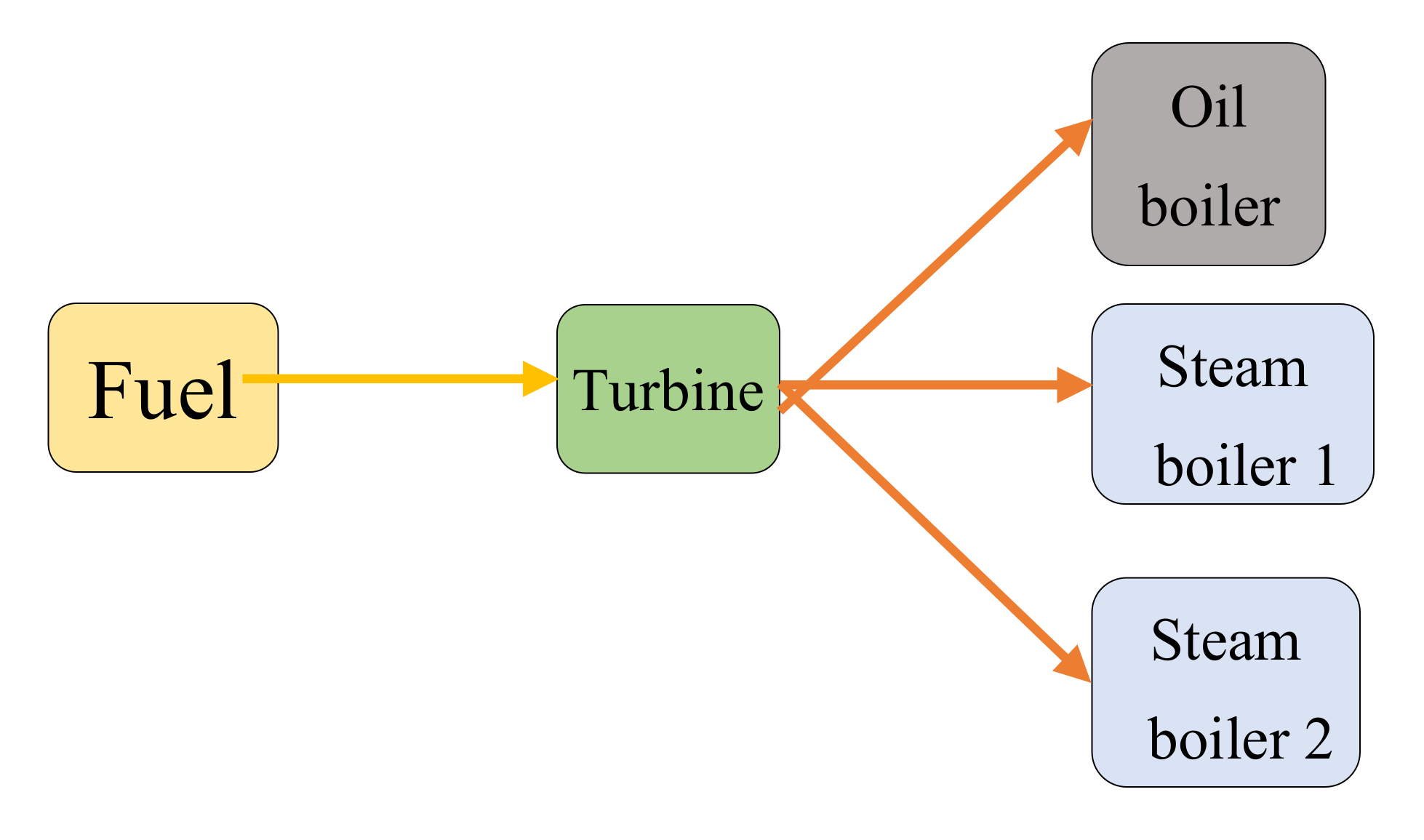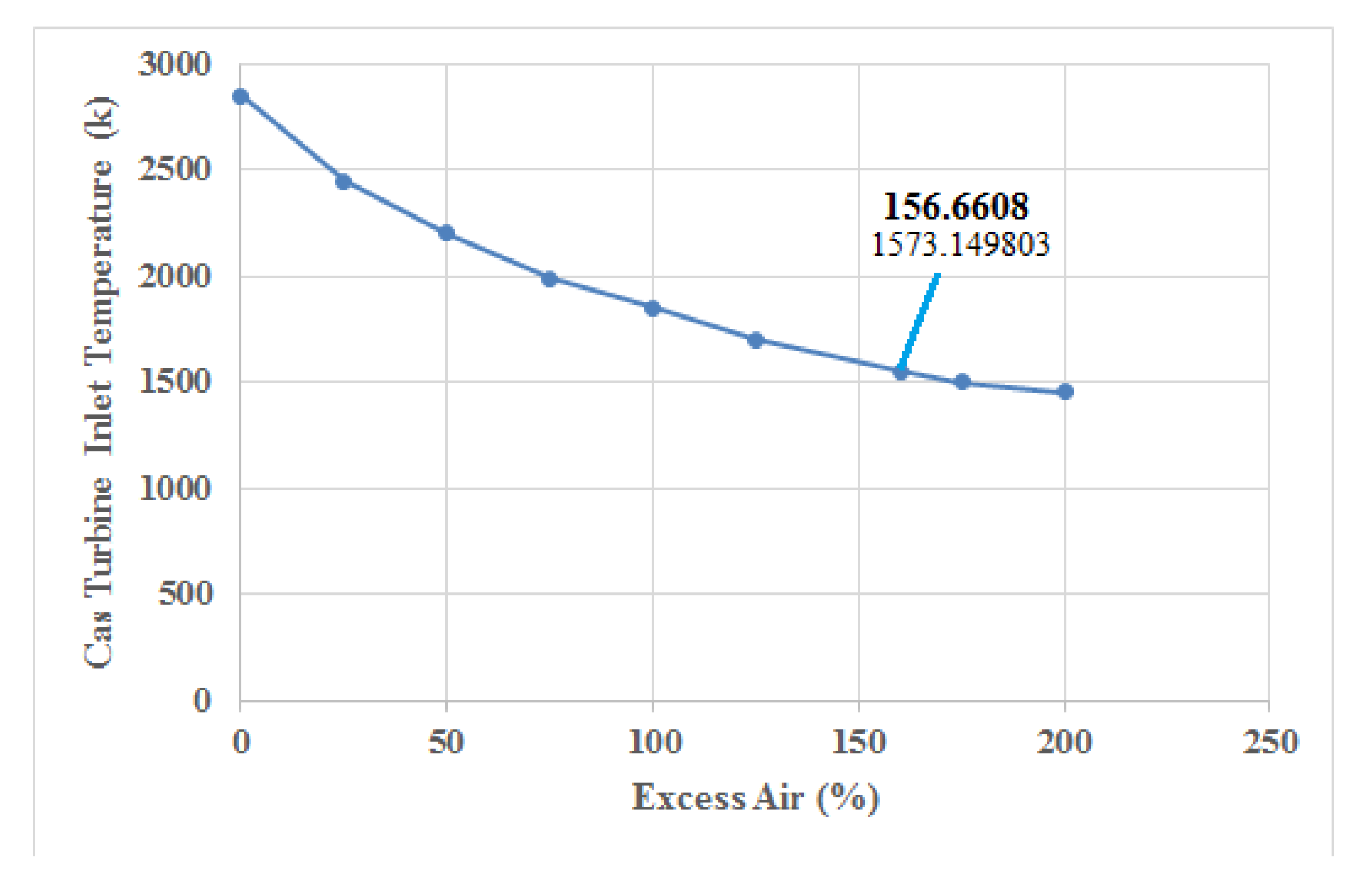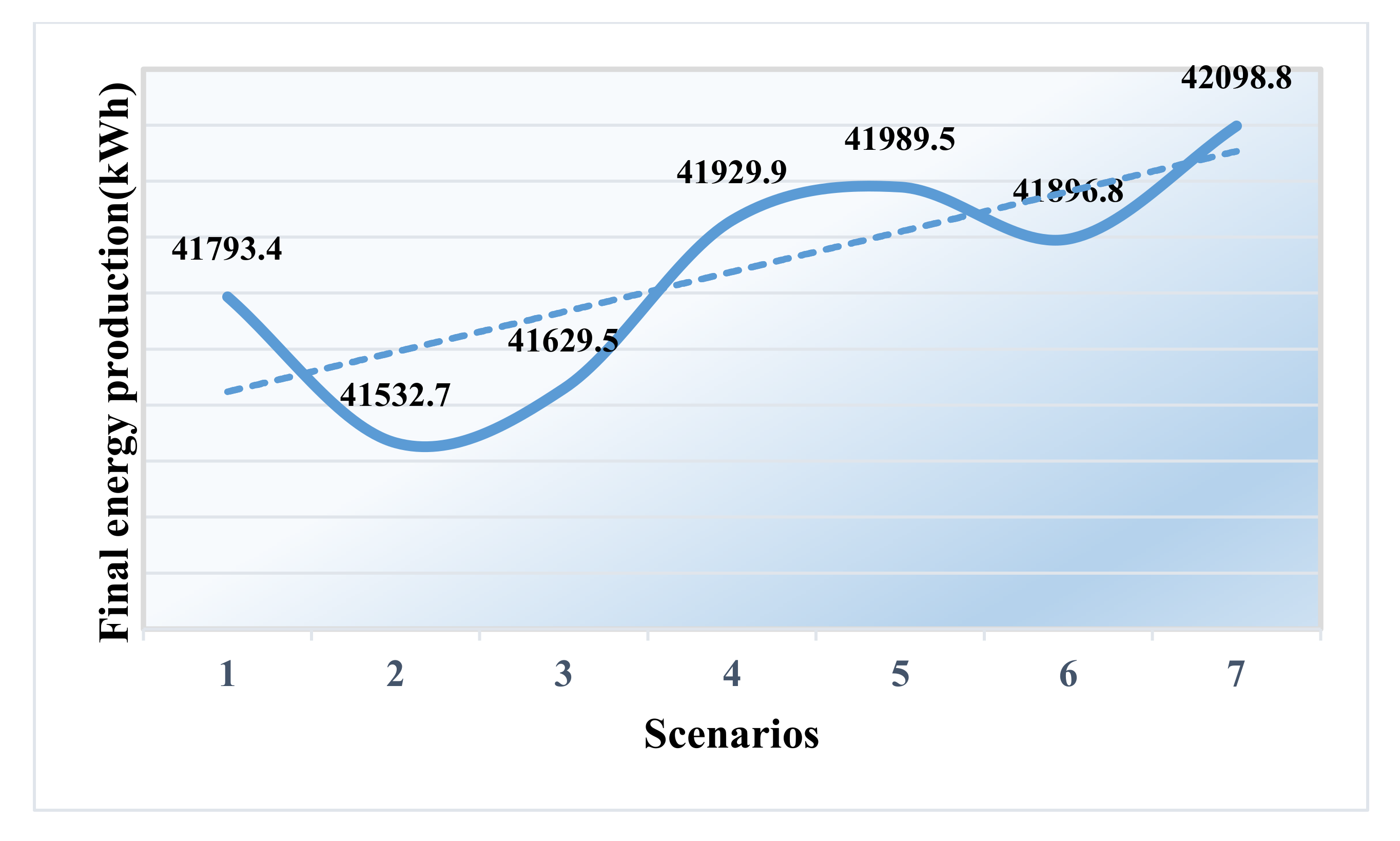3.1. Gas Turbine Analysis
Table 4 shows the air specifications at the inlet to the compressor. By establishing the specific heat ratio of the air and the compressor density ratio, the ideal enthalpy of the compressor output can be calculated. The pressure ratio used in turbines that use an axial flow compressor is between 5 to 1 and 15 to 1, and an optimal pressure ratio is 11 to 1.
Regarding the actual enthalpy of compressor output (hC.OUT), the isentropic efficiency of the compressor is 85%, with which value the temperature of the exhaust gas from the compressor is calculated. The following table shows the air specifications at the compressor outlet.
The airflow to the compressor can be determined by the fuel consumption in the combustion chamber.
Table 6 shows the analysis of natural gas entering the combustion chamber.
Using the information in
Table 7, the molecular weight of natural gas is 19.1 (kg/kmol). In this study, the amount of natural gas required to generate electricity is 0.01885 (kg/s). According to the natural gas flow, the airflow required to complete the combustion process can be obtained from stoichiometric relations, which will be equal to 0.3131 (kg/s). Thus, so far, the flue gas flow from the combustor is equal to the sum of the required airflow rates of combustion and natural gas flow. After combustion, the flue gas contains only N
2, O
2, and CO
2, the production values of which are given in
Table 7 for each of the natural gas constituents.
From
Table 8, we can see that the specific heat capacity of the flue gas
CP.mix is equal to 1.17 kJ/kg·k. Therefore, the inlet temperature to the turbine will ideally be 2835.34 Kelvin, which is a very large amount, because if gas enters the turbine at such a temperature, due to high operating stress, the turbine components will deform or creep. Considering that in real conditions, the optimal temperature for air entering the turbine is equal to 1623/15 Kelvin, for the ideal state, this value is assumed to be 1573/14 because the actual temperature is higher than the ideal temperature. To reduce the inlet temperature to the turbine, excess air must enter the compressor and then enter the combustion chamber.
By trying out scenarios and dealing with errors several times, the exact amount of excess air entering the compressor can be established to find the optimal inlet temperature for the turbine. It should be noted that the gas turbine is modeled in Excel and calculations are performed accordingly.
Figure 12 shows the temperature changes of the flue gas of the turbine inlet in relation to the changes of the excess air entering the compressor.
By changing the amount of air entering the combustion chamber, in addition to the outlet temperature, the flue gas composition also changes, and, by changing that,
CP.mix also changes.
Figure 13 shows the changes in
CP.mix relative to the excess air changes.
Finally, with the entry of 156.6618% of excess air into the gas turbine, the inlet temperature to the turbine section is optimized and the flue gas analysis will be as shown in
Table 9.
The temperature of the flue gas entering the turbine is equal to 1621/165 Kelvin; this does not pose a problem for the turbine because, in fact, the maximum allowable temperature is 1623.15 Kelvin. After the flue gas enters the turbine and the turbine blades are moved, its temperature at the turbine outlet decreases. The performance of the gas turbine per fuel unit consumed is given in
Table 10.
According to data on the fuel used in gas turbines, its performance in pollution and fuel costs is as follows (
Table 11).
According to the modeling, three types of converters have been designed to produce the amount of heat required by the industrial unit. The specifications of the converters are as follows (
Table 12,
Table 13 and
Table 14).
3.2. Scenario Analysis
After the previous steps, we will reach the stages of energy supply assessment and review the amount of electricity generated by each of the defined scenarios, and in
Table 15, the results obtained from the comparisons can be seen.
Scenario 1: In Scenario 1, natural gas consumption is equal to 0.18594 kg per second. Considering the amount of heat required for the oil boiler, the amount of electricity generated from the turbine in this scenario is equal to 361,195.3 kWh and the final energy produced is 7771.08 kg/s. The scale value of the scenario, which is the ratio of final energy to fuel consumption, will be 41,793.4 kJ/kg. Given the amount of electricity generated and energy supplied, this scenario seems to support a small percentage of the project’s expectations.
Scenario 2: In Scenario 2, natural gas consumption is equal to 0.159672 kg/s. According to the previous scenario, due to the reduction of the heat demand of steam boiler 1 compared to the oil boiler that was supplied in Scenario 1, fuel consumption, as well as electricity generation, has also decreased. Due to the supply of heat required for steam boiler 1, the amount of electricity generated from the turbine in this scenario is equal to 139,280.4 kWh and the final energy produced is 6631.62 kg/s. Finally, the scale of the value of the scenario will be equal to 41,532.7 kJ/kg, which is less than the previous scenario; therefore, the value of fuel produced will be less than Scenario 1, according to the amount of electricity production and energy supply. This scenario also seems to support a small percentage of the project’s expectations.
Scenario 3: In Scenario 3, natural gas consumption is equal to 0.168428 kg/s, which has increased compared to the previous scenario and has decreased compared to scenario 1, due to the reduced heat demand of steam boiler 2 compared to the oil boiler, which in Scenario 1 provides heat. The amount of fuel consumption, as well as the amount of electricity production, has also decreased. Due to the supply of heat required for steam boiler 2, the amount of electricity generated by the turbine in this scenario is equal to 28,542,121 kWh and the final energy produced is 7011.52 kg/s. Finally, the scale of the value of the scenario will be equal to 41,629.5 kJ/kg, which is higher than the previous scenario; as a result, the value of fuel produced will be less than Scenario 1. Given the amount of electricity generated and energy supplied, this scenario also seems to support a small percentage of the project’s expectations.
Scenario 4: In Scenario 4, natural gas consumption is equal to 0.203452 kg/s. As in the previous scenarios, in this scenario of two oil and steam boilers, with one heated simultaneously, the amount of fuel consumption and also the amount of production are increased. The electricity needed has also increased. Due to the required supply of heat, the amount of electricity generated from the turbine in this scenario is equal to 7,683,518 kWh, and the final energy produced is 8530.72 kg/s. Finally, the value scale of the scenario will be equal to 42,929.9 kJ/kg, which is more than in the previous scenarios; however, considering the amount of electricity generated and the energy supplied, it seems that this scenario will not be economical in terms of investment costs.
Scenario 5: In Scenario 5, natural gas consumption is equal to 0.212208 kg per second. As in the previous scenarios, in this scenario, two oil and steam boilers are supplied with heat simultaneously. The amount of fuel consumption and also the amount of production have increased. Electricity has also increased. In terms of the supply of required heat, the amount of electricity generated from the turbine in this scenario is equal to 1,561,292,222 kWh and the final energy produced is 8910.56 kg/s. Finally, the scale of the value of the scenario will be equal to 49.54 kJ/kg, which is more than the previous scenarios; however, considering the amount of electricity generated and energy supplied, it seems that this scenario will not be economical in terms of investment costs.
Scenario 6: In Scenario 6, natural gas consumption is equal to 0.194696 kg/s. In this scenario, two steam boilers are heated simultaneously. Fuel consumption, as well as electricity generation, has increased. Due to the supply of the required heat, the amount of electricity generated from the turbine in this scenario is equal to 54.1922222 kWh and the final energy produced is 8150.91 kg/s. Finally, the scale value of the scenario will be equal to 481,896.8 kJ/kg, which is less than the previous two scenarios; considering the amount of electricity generated and energy supplied, it seems that this scenario will not be economical in terms of investment costs.
Scenario 7: This scenario is the most complete scenario, with the highest gas consumption but high electricity generation, as well as more reliability; this is ultimately the most profitable scenario. In this model, the required amount of heat can be provided for the three boilers and a significant amount of electricity can be sold to the network or factories of an industrial town; after a sufficient time has passed, this scenario will see a return on the investment costs.
Figure 14,
Figure 15,
Figure 16 and
Figure 17 show a comparison between different scenarios
